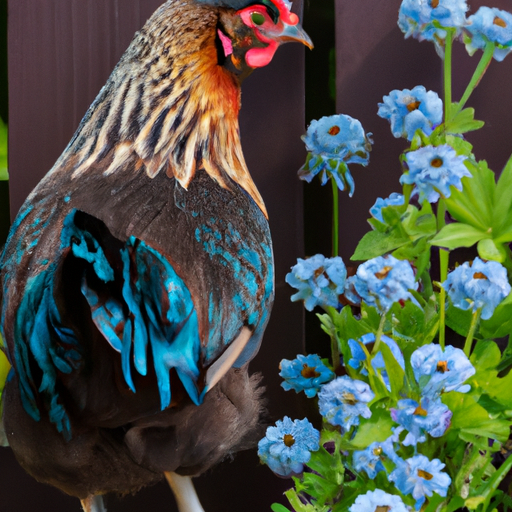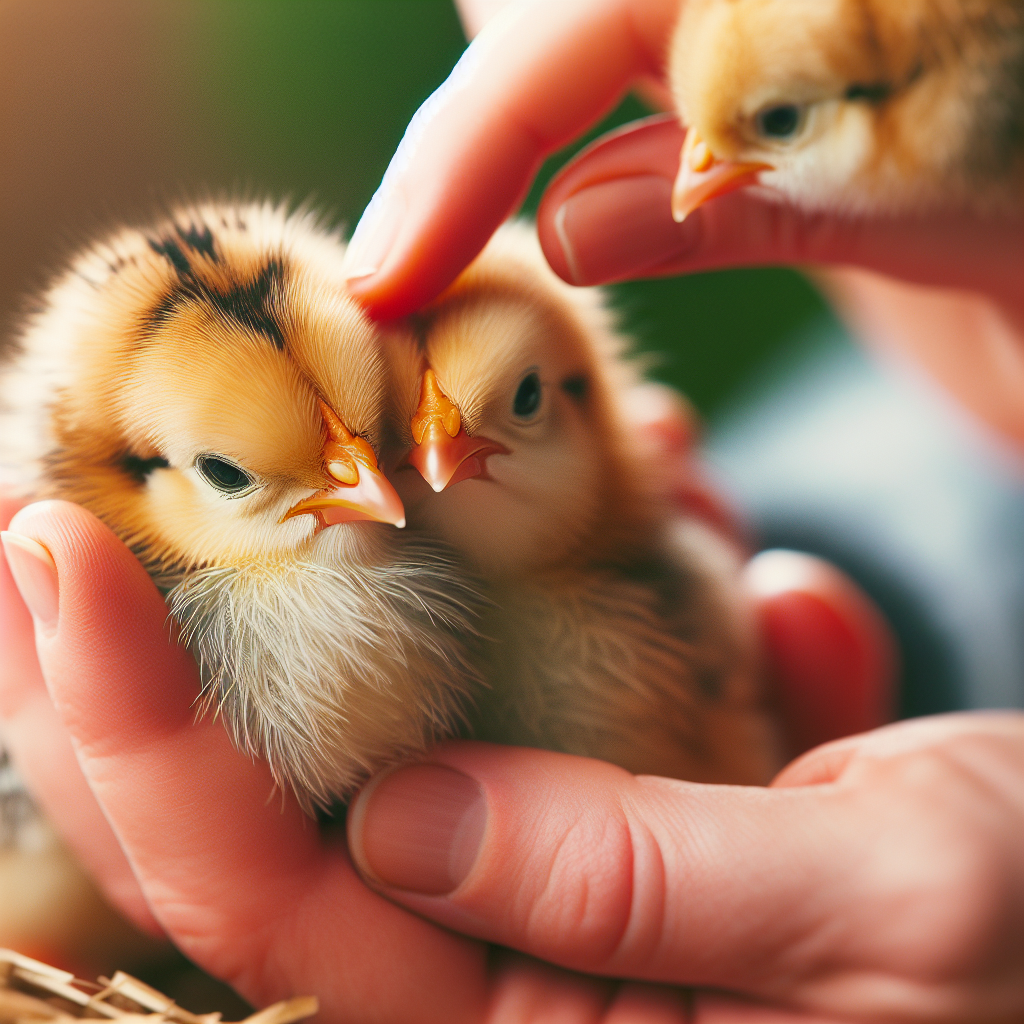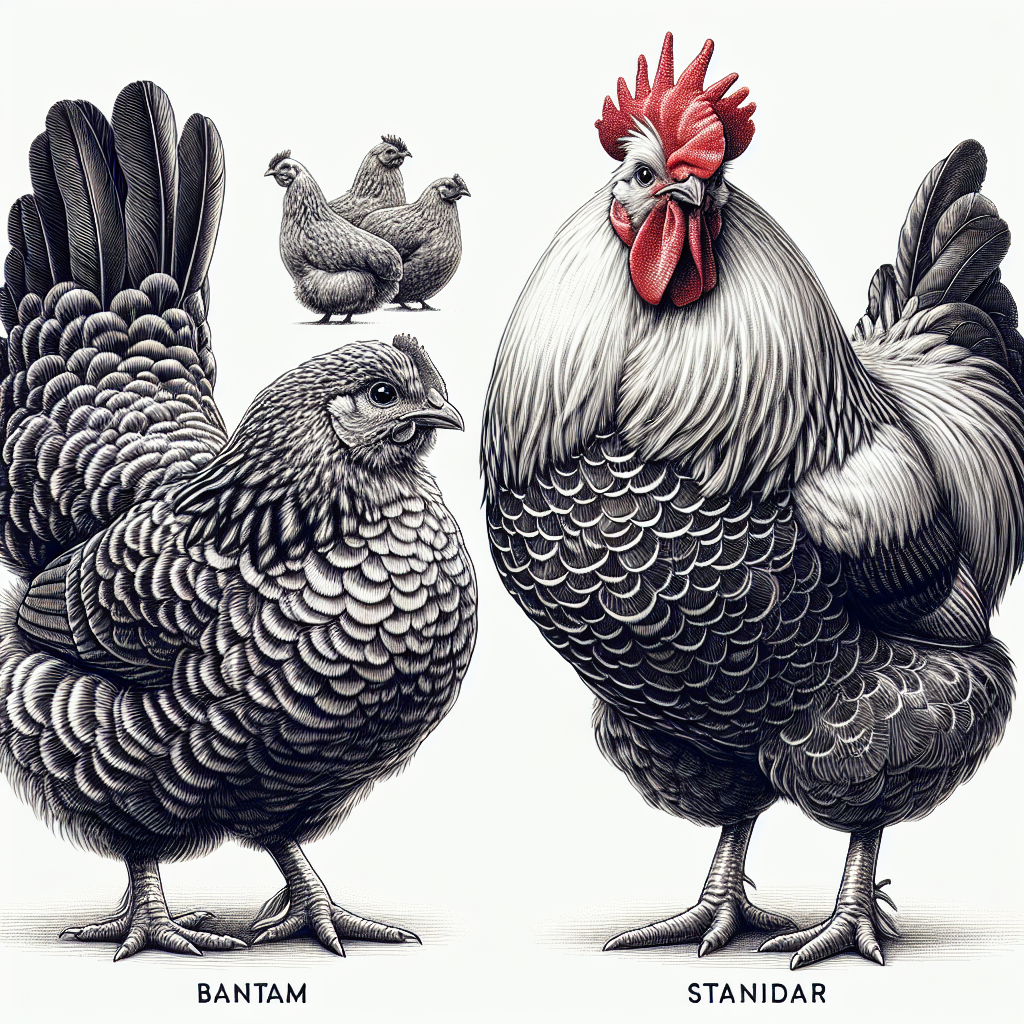Have you ever wondered how chickens communicate with one another? In the fascinating realm of poultry behavior, deciphering the signs indicating positive social interactions among chickens is crucial. By observing their body language, vocalizations, and overall behavior, you can uncover a world of intricate gestures and cues that showcase their ability to form strong social bonds and maintain harmonious interactions within the flock. Understanding these signs can not only help poultry farmers improve the welfare and productivity of their flocks, but also deepen our appreciation for the complexities of animal communication in unexpected places.
Body Language
Head and Body Position
When chickens interact with each other, their head and body position can reveal a lot about their social dynamics. A chicken that holds its head high and stands tall is often seen as confident and dominant. On the other hand, a chicken that lowers its head and crouches down may be showing submission or deference to a higher-ranked individual. Paying attention to these subtle cues can give you insight into the social pecking order within a group of chickens.
Wing Flapping
Chickens often communicate through wing flapping, which can serve both social and physical functions. When a chicken rapidly flaps its wings while standing, it may be trying to gain attention from others or establish dominance. However, if the flapping is accompanied by a relaxed body posture and open beak, it could be a friendly gesture to initiate play or social interaction.
Tail Position
The position of a chicken’s tail can provide valuable information about its mood and intentions. A raised tail is often a sign of alertness or aggression, while a lowered tail indicates relaxation or submission. Additionally, the direction of the tail movement can convey different messages. Tail feather flicking or wagging may indicate excitement or anticipation, while a still tail might signal calmness or contentment.
Feather Ruffling
Feather ruffling is a common behavior among chickens that can have multiple meanings depending on the context. When chickens ruffle their feathers, it can serve as a way to release tension or cool down in hot weather. However, it can also be a social cue to show trust or invite social grooming. If a chicken ruffles its feathers while in the presence of others, it might be seeking social connection and strengthening bonds within the group.
Vocalization
Clucking
Clucking is one of the most frequently heard vocalizations from chickens and serves various purposes. It can be a sign of contentment and relaxation when chickens are peacefully engaged in their daily activities. However, clucking can also convey excitement or anticipation, especially when food is involved. Additionally, mother hens cluck to communicate with their chicks, offering protection and guidance.
Purring
Similar to cats, chickens have a unique vocalization called purring. Purring is typically associated with relaxation and contentment. You may hear chickens purring when they are in comfortable environments, enjoying a dust bath, or being gently stroked by their caretakers. Purring is often seen as a positive social interaction among chickens, indicating a sense of security and well-being.
Crowing
The distinctive crowing sound made by roosters is not only a means of announcing their presence but also a way to communicate with other chickens. Roosters often crow to establish their territory and attract mates, signaling their strength and vitality. However, crowing can also be a form of social communication, with different crowing patterns conveying different messages to other chickens within the group.
Chirping
Chickens use chirping as a means of communicating with their flock mates. Chirps can express a wide range of emotions and intentions, such as alarm, excitement, or seeking attention. Mother hens also use specific chirping patterns to communicate with their chicks, guiding and warning them about potential dangers. By listening to the chirping vocalizations of your chickens, you can gain insight into their social interactions and overall well-being.
Physical Contact
Beak Nuzzling
Beak nuzzling is a behavior commonly observed among chickens, especially when they are in close proximity to one another. This gentle touching of beaks is a way for chickens to establish social bonds and communicate affection. Beak nuzzling is often seen between individuals that have a close relationship, such as a bonded pair or a mother and her chicks. It’s a positive social interaction that promotes a sense of unity and belonging within the flock.
Wing Extending
Wing extending is a behavior where chickens stretch out their wings, sometimes even touching or overlapping with other chickens. This physical contact is a form of social bonding and can occur during moments of relaxation or when chickens are engaged in group activities. Wing extending allows chickens to establish a sense of closeness and trust, reinforcing the social ties within the flock.
Head Bobbing
Head bobbing is a common physical behavior among chickens that serves multiple purposes. When a chicken bobs its head up and down, it can be a sign of curiosity or alertness. Chickens also engage in head bobbing during courtship rituals, where the males display this behavior to attract potential mates. Furthermore, head bobbing can be a way for chickens to communicate their presence and establish social boundaries within the group.
Feeding Behavior
Allowing Others to Feed
One indication of positive social interactions among chickens is their willingness to allow others to feed alongside them. When chickens are comfortable and feel secure in their environment, they are more likely to share resources, including food. In a harmonious group, you will observe chickens taking turns at the feeding area without showing signs of aggression or territorial behavior.
Feeding Side by Side
Feeding side by side is another positive social behavior commonly seen among chickens. When chickens choose to eat together in close proximity, it indicates a sense of trust and camaraderie within the flock. This behavior is particularly noticeable during mealtime when chickens line up or gather in a circle, happily pecking and foraging for food in each other’s presence.
Making Food Noises
Chickens often make food-related vocalizations while feeding, which can serve as a form of communication within the group. These food noises can range from soft clucks and purrs to more animated and excited vocalizations when a particularly tasty treat is discovered. Making food noises is a way for chickens to share their findings and invite others to join in the feast, fostering a positive and inclusive environment.
Feeding Retreats
When a chicken discovers a valuable food resource, it might exhibit feeding retreat behavior. Instead of hastily gobbling up the food, the chicken may pick up a morsel, move away from the group, and consume it in a more secluded area. This behavior is a positive social interaction as it allows the chicken to enjoy its treat in peace while minimizing potential disputes or competition over the resource.
Grooming
Pecking Order
Within a flock of chickens, a social hierarchy known as the pecking order is established. The pecking order determines the social rankings and interactions among the chickens. Positive social interactions related to grooming can be observed within the pecking order. Higher-ranked chickens may engage in gentle pecking and preening behaviors towards lower-ranked individuals, which helps maintain the social structure and reinforces group cohesion.
Mutual Preening
Mutual preening, also known as allogrooming, is a behavior where chickens groom each other’s feathers. This behavior reinforces social bonds between flock members and helps maintain feather health and cleanliness. Mutual preening is a positive social interaction that promotes trust, relaxation, and cooperation within the flock. It also plays a role in reducing stress and can be seen as a form of social bonding among chickens.
Dust Bathing Together
Dust bathing is an essential behavior for chickens to keep their feathers clean and free from parasites. While dust bathing is usually an individual activity, chickens may also engage in it together, creating an atmosphere of social interaction and camaraderie. Dust bathing in a group allows chickens to share the benefits of the dust bath, such as reducing mites and lice infestations, while also reinforcing social bonds and strengthening the flock dynamic.
Social Pecking Order
Establishing Dominance
The social pecking order in a group of chickens is established through various interactions and behaviors. Dominance is usually established through displays of aggression, such as pecking, chasing, or wing flapping. Higher-ranked chickens, often referred to as “alpha” birds, assert their dominance over lower-ranked individuals, shaping the social structure of the flock. Establishing dominance is an essential aspect of social interactions among chickens, ensuring order and stability within the group.
Submission
To maintain order within the flock, chickens also display submissive behaviors towards higher-ranked individuals. Submissive behaviors can include crouching down, avoiding direct eye contact, and moving away from dominant chickens. By displaying submission, lower-ranked chickens demonstrate respect and deference to their higher-ranked counterparts, minimizing conflict and promoting social order.
Maintaining Hierarchies
Once the pecking order is established, chickens continue to maintain the social hierarchies through ongoing interactions and behaviors. Higher-ranked chickens will regularly assert their dominance to remind lower-ranked individuals of their place within the group. Lower-ranked chickens, in turn, demonstrate deference and respect to prevent confrontation and maintain the overall stability of the flock.
Sharing Resources
Positive social interactions among chickens can also be observed in their willingness to share resources. Higher-ranked chickens often have priority access to food, water, and preferred roosting spots. However, in harmonious flocks, lower-ranked chickens are still able to access resources without facing aggression or exclusion. Through sharing resources, chickens foster a sense of cooperation and collective well-being within the group.
Nesting Behavior
Sharing Nesting Sites
Chickens often have a preference for communal nesting, where multiple hens lay their eggs in the same nesting area. This behavior fosters a positive social environment, as chickens willingly share and protect the nesting site. By allowing each other to use the same nesting area, chickens strengthen their social bonds and create a sense of unity within the flock.
Nesting in a Group
In addition to sharing nesting sites, chickens also exhibit nesting behavior in groups. Instead of each hen finding her own secluded nesting spot, multiple hens may choose to nest in close proximity to one another. This behavior demonstrates a level of trust and cooperation among the hens. Nesting in a group allows them to collectively protect their eggs, share warmth, and ward off potential threats, enhancing their overall social well-being.
Taking Turns Incubating Eggs
During the incubation period, hens take turns sitting on the eggs to keep them warm and promote proper development. This behavior is not only a practical necessity but also a positive social interaction. By taking turns incubating eggs, hens demonstrate cooperation and ensure that all eggs receive equal attention and care. It strengthens the social bonds within the flock and contributes to the overall success of the hatching process.
Chick Sitting
Chickens also exhibit positive social interactions through chick sitting behavior. This is when a hen takes on the role of caring for and protecting the chicks of other hens within the flock. Chick sitting promotes a sense of communal parenting and allows individual hens to take breaks from their own chicks. The hens that engage in chick sitting demonstrate a nurturing and cooperative attitude towards the well-being of the entire flock.
Marching or Line Formation
Single File Marching
Chickens sometimes display line formation or single-file marching behavior when they move from one place to another. This behavior is often seen when chickens are exploring their environment or transitioning from the coop to the outdoor area. Single-file marching provides a sense of order and coordination within the flock, with each chicken following the leader ahead of them. It’s a positive social interaction that ensures the safety and efficient movement of the entire group.
Group Movement
In addition to single-file marching, chickens also engage in group movement behavior. This occurs when multiple chickens move together side by side or in close proximity, often in the same direction. As they move as a cohesive unit, group movement fosters a sense of social cohesion and cooperation within the flock. It allows chickens to navigate their surroundings together, providing safety and support to one another.
Follow the Leader
Follow the leader is a behavior frequently seen among chickens during foraging or exploring activities. When one chicken takes the initiative to lead, others in the flock often follow along. This behavior promotes a positive social interaction by encouraging cooperation and shared decision-making. By following the leader, chickens benefit from the collective knowledge and experience within the group, improving their overall chances of finding food and staying safe.
Roosting
Preferred Roosting Spots
Roosting behavior among chickens involves choosing specific locations to rest and sleep. Chickens often have preferred roosting spots, with higher-ranked individuals usually occupying the more desirable locations. However, positive social interactions can be observed when lower-ranked chickens are allowed to roost alongside their higher-ranked counterparts. This inclusivity contributes to a harmonious flock dynamic and a sense of unity among the chickens.
Closely Packed Roosting
An indicator of positive social interactions among chickens during roosting is closely packed roosting. Chickens naturally seek the warmth and safety of each other’s bodies during sleep. When they roost closely together, often with their feathers overlapping, it creates a sense of comfort and security within the flock. Closely packed roosting is an expression of their social nature and promotes a positive social environment.
Huddling for Warmth
Chickens often huddle together during cold weather to conserve body heat and stay warm. This huddling behavior is a positive social interaction that offers protection and comfort to all members of the flock. Huddling allows chickens to share their body warmth and creates a microclimate that helps them withstand low temperatures. This cooperative behavior fosters social bonds and exemplifies the strong sense of community among chickens.
Alertness and Communication
Warning Calls
Chickens have distinctive warning calls that alert the entire flock to potential threats or dangers. When a chicken perceives something out of the ordinary, it emits a loud, high-pitched sound, causing other chickens to become alert and attentive. Warning calls are a vital form of communication within the flock and demonstrate the cooperative nature of chickens. By sharing information about potential threats, chickens collectively ensure the safety of the entire group.
Alarmed Posture
In addition to warning calls, chickens also adopt an alarmed posture when they sense danger. This posture includes erect feathers, raised heads, and a rigid body stance. Chickens in an alarmed posture often freeze in place, attentively scanning their surroundings for any signs of threat. This behavior is a positive social interaction as it allows the entire flock to become aware of potential dangers and respond collectively to ensure their safety.
Collective Response
When a chicken emits a warning call or assumes an alarmed posture, other chickens in the flock often respond collectively. They may gather together in a closer group, cease their previous activities, and exhibit heightened alertness. This collective response demonstrates the strong social bonds and cooperative nature of chickens. By acting as a unified group, they increase their chances of detecting and avoiding potential threats, fostering a positive social environment within the flock.
In conclusion, chickens exhibit a wide range of behaviors that indicate positive social interactions within their flock. From body language cues such as head and body position to vocalizations like clucking and purring, chickens engage in various behaviors to communicate, establish dominance, and maintain social hierarchies. Physical contact through beak nuzzling, wing extending, and head bobbing reinforces social bonds, while feeding behavior, grooming, and nesting behavior promote cooperation and inclusivity. Whether it’s through line formation, roosting closely packed, or collective responses to warnings, chickens demonstrate their social nature and their ability to thrive in a harmonious flock dynamic.




